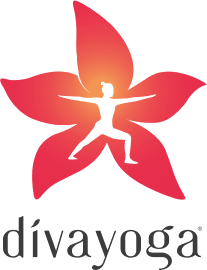Yoga for Scoliosis: Daily Yoga Pose May Reduce Spinal Curve

Scoliosis is a condition in which the spine curves to the side or curves laterally. It is usually found in children and adolescents but it can affect people of all ages as well. Not only does scoliosis affect the spine, but it also throws off your hip and shoulder alignment, displaces the ribs and changes your body's centre of gravity.
Symptoms of scoliosis:
- Leaning on to one side
- A deeper curvature of the spine
- Shoulders/ hips look uneven
- Ribs that stick out farther on one side than the other
- Lower back pain
- Stiff back/knots in the back
- Pain or numbness in the lower body
- Fatigue due to tired muscles
Why yoga is beneficial for scoliosis:
There are several benefits of yoga for scoliosis. Yoga works on a deeper muscular level than most other forms of exercise. It allows the muscles to first stretch and then relax completely which releases tension and increases flexibility.
There are several yogic practices that help with treating the symptoms of scoliosis and ultimately the actual condition itself.
Asanas: Yoga asanas give a lot of importance to spinal health and movement. Mobility of the spine, flexibility of the musculature of the spine are all taken into consideration while doing postures that work the spine. In scoliosis, the biggest and most painful symptom is backache and stiffness. Yoga can effectively treat these symptoms with movements that create traction and extension in the spine: Tadasana, uttanasana bhujangasana and so on.
Pranayamas: Scoliosis can displace the ribs and in severe cases affect lung capacity. With pranayamas and breath awareness even while doing asanas, this can be reversed. Thoracic breathing that expands the ribs and lungs is a very helpful breathing technique for scoliosis. In addition to that, abdominal breathing is also very effective.
Yoga Nidra: relaxation of the muscles is also very important to treat the symptoms of scoliosis. In yoga nidra, you bring awareness to each part of the body and consciously relax and let the stiffness and tension go till your body feels light and pain free.
5 Best Most Effective poses For Scoliosis you must try
Upward stretches: These are the best stretches for scoliosis. They allow the spine to extend upwards and create space between the vertebrae which over time can reduce the lateral curve of the spine.
Cat-cow stretch: These two poses and the movement in between allows the spine to increase its mobility and makes the muscles in the torso more flexible so that there is no stiffness from scoliosis. This is one of the best yoga poses for scoliosis and an overall healthy spine.
Locust Pose: this is a backbend that strengthens the muscles in the lower back to give you a strong and stable base for your spine.
Half Uttanasana: this is a gentle forward fold that helps you create traction and space in the spine. It also releases tension from the lower back and calms the mind.
Childs Pose Lateral Bend: This pose gently tries to counter the curvature of your spine. In this pose, after getting into a childs pose you slowly walk your palms to the other side of the direction of your spinal curve. This can give relief from pain and stiffness of the muscles and also slowly start countering the effects of scoliosis.
Beginner Yoga Poses for People with Scoliosis
Here are a few more poses that can be done by beginners in addition to the above mentioned poses. As beginners, you can even do these scoliosis exercises at home.
- Tadasana
- Trikonasana with the palm on a chair
- Setubandhasana
- Gentle supine twists
- Side plank/vasisthasana
- Thoracic and abdominal breathing exercises
Scoliosis and Yoga: The dos and don'ts
- Do make sure that you know everything about the condition of your spine. Know what kind, what angle and what extent the curve is at before you try to fix it.
- Do know your limits with yoga. Make sure you take it slow, listen to your body and then decide to proceed or not.
- Do not rush into anything, may it be physiotherapy, yoga or even surgery, be patient and then decide.
- Do not expect quick results. The body takes its own time to heal and get better, you just have to diligently do your bit.
Sarva tips to handle scoliosis
- Start with basic yoga postures and breathing exercises and then try more as you get comfortable.
- Use lots of props like bolsters, blocks and blankets to find relaxation in the posture.
- In every posture and pranayama, always think of creating space in the chest and expanding it.
- Join a personal training session with an experienced yoga teacher and make sure you inform them about the scoliosis and discuss it in detail before starting anything.
FAQs
What type of yoga is best for scoliosis?
Restorative yoga and some hatha yoga postures, especially stretches work best for scoliosis.
Can scoliosis be cured by yoga?
Yes, overtime and with regular, disciplined practice, yoga can cure scoliosis.
What exercises cure scoliosis?
Upwards extensions, gentle lateral bends and forward folds, backbends and breathing techniques like thoracic breathing are very effective for scoliosis.
Can plank help scoliosis?
A side plank or vashistasana strengthens the core and can help with scoliosis
What exercises to avoid if you have scoliosis?
Rigorous workouts, heavy weight training, deep twists and forward folds and anything that has a heavy impact on the spine should be avoided.
Does yoga make scoliosis worse?
No, yoga, if done correctly and under expert supervision can help alleviate the symptoms of scoliosis and can even cure it overtime.
